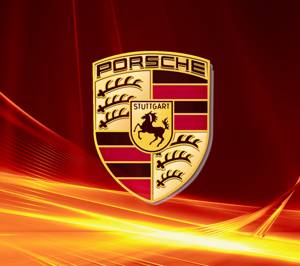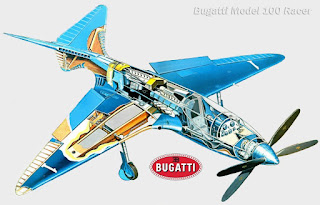History of Porsche- New design- http://www.autosmithcar.com/
In post-war Germany, parts were generally in short supply, so the 356 automobile used components from the Volkswagen Beetle, including the engine case from its internal combustion engine, transmission, and several parts used in the suspension. The 356, however, had several evolutionary stages, A, B, and C, while in production, and most Volkswagen-sourced parts were replaced by Porsche-made parts. Beginning in 1954 the 356s engines started utilizing engine cases designed specifically for the 356. The sleek bodywork was designed by Erwin Komenda, who also had designed the body of the Beetle. Porsche's signature designs have, from the beginning, featured air-cooled rear-engine configurations (like the Beetle), rare for other car manufacturers, but producing automobiles that are very well balanced.
In 1964, after a fair amount of success in motor-racing with various models including the 550 Spyder, and with the 356 needing a major re-design, the company launched the Porsche 911: another air-cooled, rear-engined sports car, this time with a six-cylinder "boxer" engine. The team to lay out the body shell design was led by Ferry Porsche's eldest son, Ferdinand Alexander Porsche (F. A.). The design phase for the 911 caused internal problems with Erwin Komenda, who led the body design department until then. F. A. Porsche complained Komenda made unauthorized changes to the design. Company leader Ferry Porsche took his son's drawings to neighbouring chassis manufacturer Reuter. Reuter's workshop was later acquired by Porsche (so-called Werk 2). Afterward Reuter became a seat manufacturer, today known as Keiper-Recaro.
The design office gave sequential numbers to every project (See Porsche type numbers), but the designated 901 nomenclature contravened Peugeot's trademarks on all 'x0x' names, so it was adjusted to 911. Racing models adhered to the "correct" numbering sequence: 904, 906, 908. The 911 has become Porsche's most well-known and iconic model – successful on the race-track, in rallies, and in terms of road car sales. Far more than any other model, the Porsche brand is defined by the 911. It remains in production; however, after several generations of revision, current-model 911s share only the basic mechanical configuration of a rear-engined, six-cylinder coupé, and basic styling cues with the original car. A cost-reduced model with the same body, but with 356-derived four-cylinder engine, was sold as the 912.
In 1972, the company's legal form was changed from Kommanditgesellschaft (KG), or limited partnership, to Aktiengesellschaft(AG), or public limited company, because Ferry Porsche came to believe the scale of the company outgrew a "family operation", after learning about Soichiro Honda's "no family members in the company" policy at Honda. This led to the establishment of an Executive Board with members from outside the Porsche family, and a Supervisory Board consisting largely of family members. With this change, most family members in the operation of the company, including F. A. Porsche and Ferdinand Piëch, departed from the company.
F. A. Porsche founded his own design company, Porsche Design, which is renowned for exclusive sunglasses, watches, furniture, and many other luxury articles. Louise's son and Ferry's nephew Ferdinand Piëch, who was responsible for mechanical development of Porsche's production and racing cars (including the very successful 911, 908 and 917 models), formed his own engineering bureau, and developed a five-cylinder-inline diesel engine for Mercedes-Benz. A short time later he moved to Audi (used to be a division, then a subsidiary, of Volkswagen), and pursued his career through the entire company, ultimately becoming the Chairman of Volkswagen Group.
The first Chief Executive Officer (CEO) of Porsche AG was Dr. Ernst Fuhrmann, who had been working in the company's engine development division. Fuhrmann was responsible for the so-called Fuhrmann-engine, used in the 356 Carrera models as well as the 550 Spyder, having four overhead camshafts instead of a central camshaft with pushrods, as in the Volkswagen-derived serial engines. He planned to cease the 911 during the 1970s and replace it with the V8-front engined grand sportswagon 928. As we know today, the 911 outlived the 928 by far. Fuhrmann was replaced in the early 1980s by Peter W. Schutz, an American manager and self-proclaimed 911 aficionado. He was then replaced in 1988 by the former manager of German computer company Nixdorf Computer AG, Arno Bohn, who made some costly miscalculations that led to his dismissal soon after, along with that of the development director, Dr. Ulrich Bez, who was formerly responsible for BMW's Z1model, and was CEO of Aston Martin from 2000 to 2013




Comments
Post a Comment